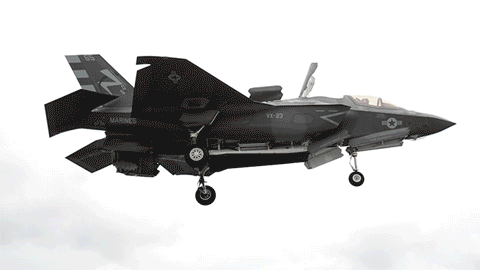The newest X-Men movie is rolling out to theaters worldwide, and we have a unique connection to this group of “gifted youngsters” and superheroes.
Featured prominently in both comic books and on the big screen, the X-Men’s official mode of transportation is heavily inspired by our SR-71 Blackbird. [See the X-Jet in action.]
The Birth Of The Blackbird
Beast didn’t invent the SR-71 – a Skunk did. A small team of Skunks to be exact. During the Cold War, there was a need for a new reconnaissance aircraft that could evade enemy radar, and the customer needed it fast. At Lockheed Martin’s advanced development group, the Skunk Works®, work had already begun on an innovative aircraft to improve intelligence-gathering, one that would fly faster than any aircraft before or since, at greater altitude, and with a minimal radar cross section. The team rose to the nearly impossible challenge, and the aircraft took its first flight on December 22, 1964. A Blackbird was born.
Today, the Skunk Works team is still using an innovative and world-class approach to quickly solve challenges. The team’s unique culture is the key to its success and the secret ingredient that continues to define the future of aerospace.
Capabilities: X-Jet Vs. Sr-71
Vertical Take-Off And Landing (Vtol)

In the 2016 blockbuster Deadpool, two members of the X-Men team use the X-Jet to drop in on the anti-hero, highlighting its modified vertical take-off and landing (VTOL) capability. While the actual SR-71 was unable to perform such a feat, the 5th Generation F-35 Lightning II comes close.The F-35B short takeoff/vertical landing (STOVL) variant is the world’s first supersonic STOVL stealth aircraft.
It is designed to operate from austere bases and a range of ships near front-line combat zones. It can also take off and land conventionally from longer runways on major bases. The U.S. Marine Corps' F-35B aircraft reached initial operational capability in 2015, when a squadron of 10 F-35Bs was declared ready for world-wide deployment.
Supersonic Flight
Former SR-71 pilot Col. Buzz Carpenter' first-hand account of the aircraft's power and majesty:
Stealth
Reconnaissance
The original Blackbird was designated the A-12 and was a single-seat aircraft. The A-12 soon evolved in to the larger SR-71, which added a second seat for a Reconnaissance Systems Officer who controlled the sensors needed for each mission.
In the X-Men universe, they use a brainwave-harnessing device called Cerebro to aid in reconnaissance. The SR-71’s primary imaging sensor, a photographic camera or a radar imaging sensor, was located in the nose of the aircraft and was replaced after every operational mission. The sensors gathered intelligence over 125,000 square miles every hour, allowing the aircraft to provide the United States detailed, mission-critical reconnaissance for more than two decades.




